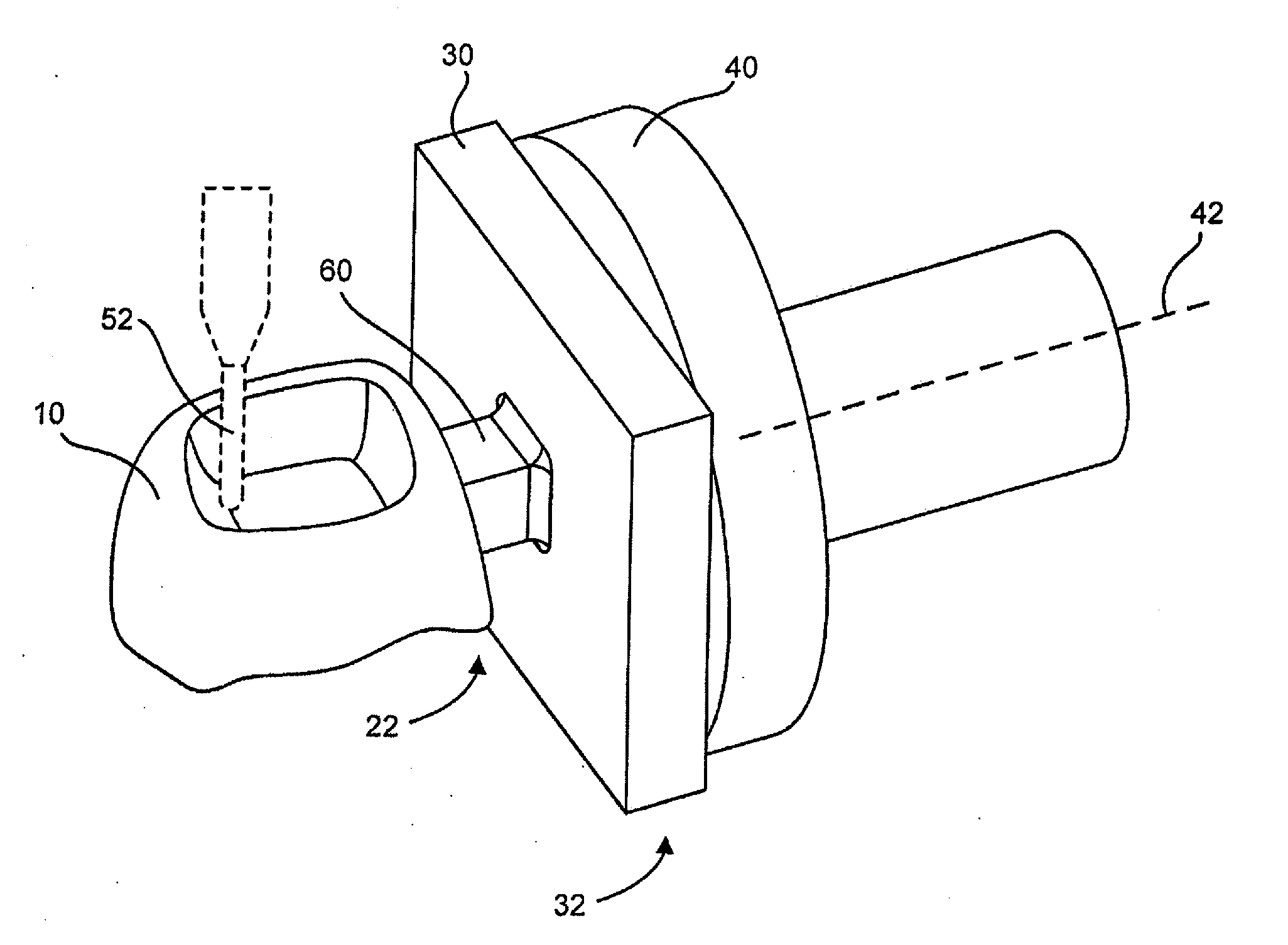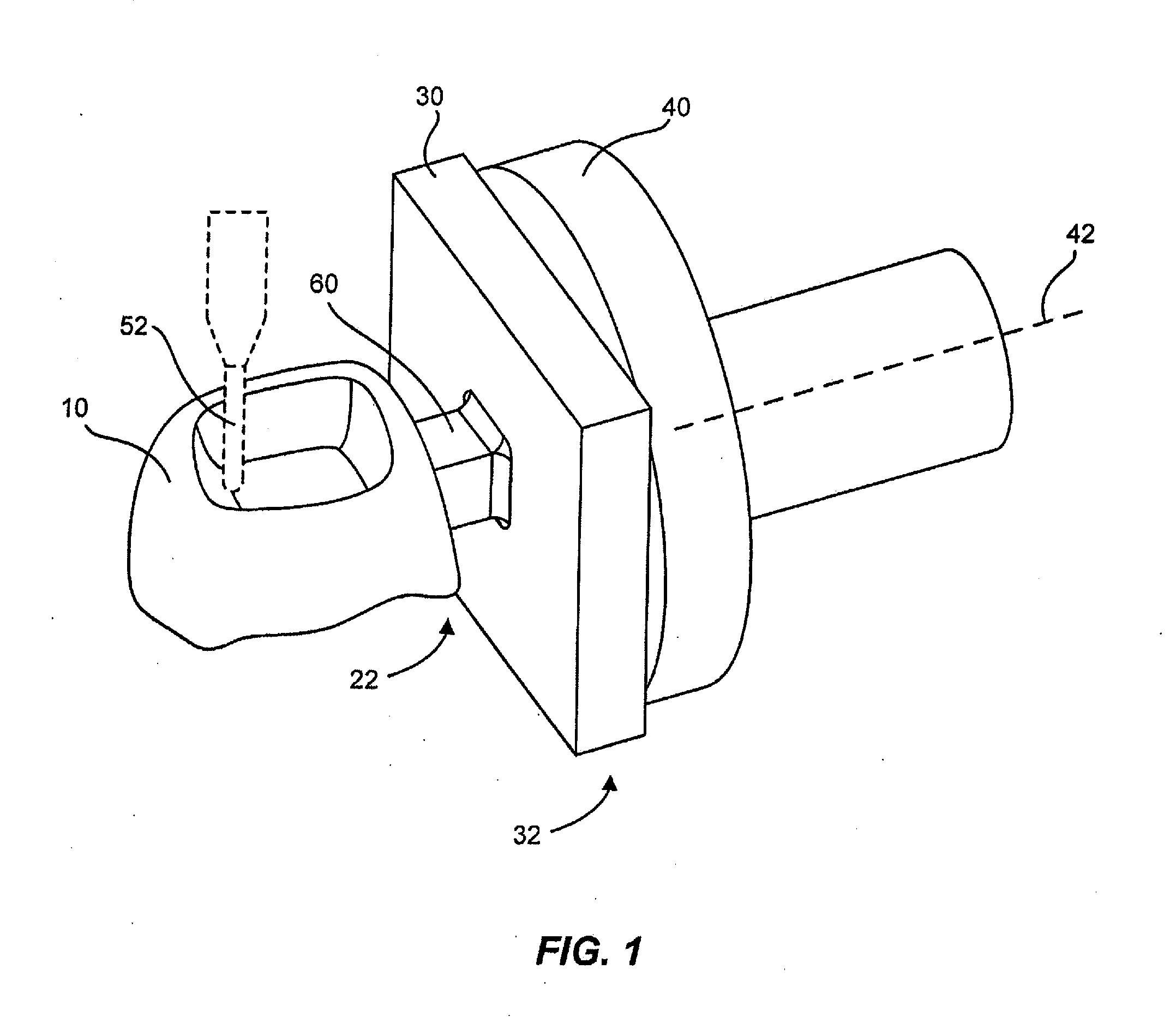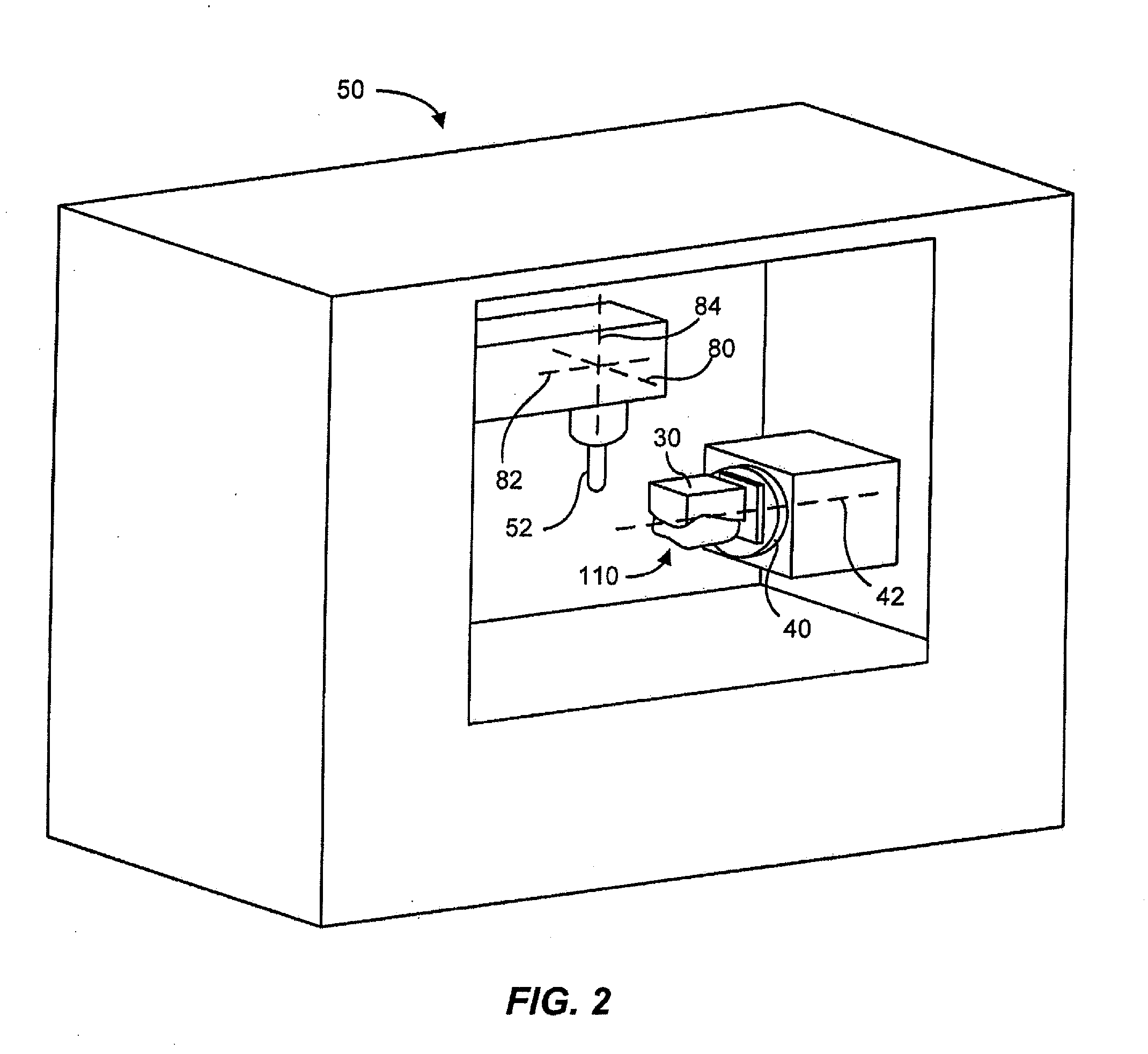Method for Machining a Dental Prosthesis
a technology for dental prostheses and machining methods, which is applied in the field of manufacturing dental prostheses, can solve the problems of small forming tools that are not as strong as larger forming tools of the same quality, dental prostheses that are difficult to machine than materials of lesser hardness, and the likelihood of forming tools being prone to failure, so as to reduce the likelihood of forming tools failing and improve the likelihood of forming tools
- Summary
- Abstract
- Description
- Claims
- Application Information
AI Technical Summary
Benefits of technology
Problems solved by technology
Method used
Image
Examples
Embodiment Construction
)
[0022]Illustrated in FIG. 1 is a dental prosthesis 10 during manufacture in an example embodiment in accordance with the invention. In this embodiment, a workpiece 30 may be attached to a fixture 40. A connector 60 may be between a proximal end 22 of the dental prosthesis 10 and a proximal end 32 of the workpiece 30. Also illustrated is that the dental prosthesis 10 may be formed by a forming tool 52. A workpiece 30 may comprise any suitable dental prosthesis material, for example, machinable ceramics such as sintered ceramics (i.e. feldspar ceramic) and partially sintered ceramics (i.e. zirconium oxid and aluminium oxid), titanium, gold, glass, acrylic, etc.
[0023]As illustrated in FIG. 2, a dental prosthesis 10 may be formed using a machine tool 50. A machine tool 50 may provide linear movement in at least three axes 80, 82, 84 and rotational movement about at least one axis 42. For example, a machine tool 50 may provide linear movement in X, Y, and Z orthogonal axes. In one aspec...
PUM
 Login to View More
Login to View More Abstract
Description
Claims
Application Information
 Login to View More
Login to View More - R&D
- Intellectual Property
- Life Sciences
- Materials
- Tech Scout
- Unparalleled Data Quality
- Higher Quality Content
- 60% Fewer Hallucinations
Browse by: Latest US Patents, China's latest patents, Technical Efficacy Thesaurus, Application Domain, Technology Topic, Popular Technical Reports.
© 2025 PatSnap. All rights reserved.Legal|Privacy policy|Modern Slavery Act Transparency Statement|Sitemap|About US| Contact US: help@patsnap.com



